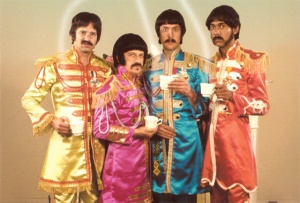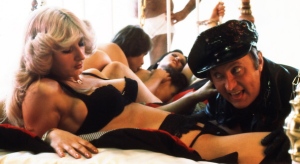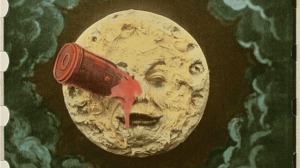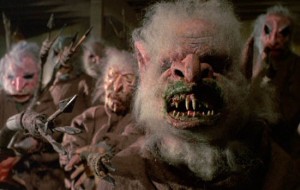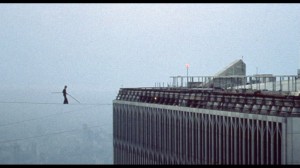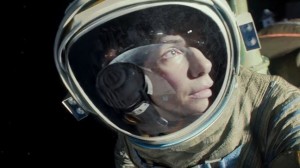Rating: 4.5/5
“I’m not for sale. I’m fucking Love, do you understand what I’m saying? Like, the Beatles were for sale. I give it away.”
Filmed over seven years, Ondi Timoner’s documentary is a fascinating, gripping insight into the (mostly friendly) rivalry between two bands, The Dandy Warhols and The Brian Jonestown Massacre. It’s a story of egos and artistry, a cautionary tale about truly living the rockstar lifestyle and the hazards of becoming part of the corporate music industry – Timoner’s access to both bands seems to be entirely unrestricted, and nothing seems to be off limits. This must have dominated Timoner’s life for years – they seem to be completely comfortable with both her and the camera recording every move, and it seems like there’s nothing she hasn’t caught on film.
While it probably helps to be somewhat familiar with the bands, it’s not essential – most people will have heard the Dandy’s “Bohemian Like You,” but don’t be surprised if you’ve never heard of BJM – the whole point is that no one has. Narrated by Dandy frontman, Courtney Taylor (also the leading creative force in the band – he writes all the songs), early on he talks about his admiration for BJM’s frontman (and, similarly, the creative force), Anton Newcombe. In contrast to the fairly straight-laced Dandys, Anton is a self-destructive artist, uncooperative, unable to “play the game,” as it were, yet convinced that he doesn’t need to in order to start the necessary, inevitable “revolution.” While the Dandys smoke weed and drink and partake in that lifestyle, they like to remind us that they take their jobs very seriously, that they want to be successful, that they don’t mess around – they admit they are the “most well-adjusted band in America.” Imagine them as the straight-A students: Anton and the BJM are the ones smoking dope in the school bathrooms when they should be in class.
It often seems as though there’s a serious case of hero worship at play here. Taylor is clearly in awe of Anton’s talents – jealous, even (just as Anton seems unwilling to acknowledge his envy at the Dandy’s subsequent success). And more than that, it seems as though Taylor is also caught up in everything that Anton represents: that rebellious lifestyle, the anarchy stopping Anton from ever really achieving any kind of (dare I say it?) mainstream popularity. Fairly early on, Taylor joins the BJM on tour and, as expected, the gigs are a shambles. Anton seems incapable of showing any restraint: the shows are notorious, with fans coming just to see what chaos will unfold. Taylor, who would clearly never allow any such incidents at his own gig (on-stage punch-ups, impromptu resignations, riots…), evidently loves being a part of such bedlam – it’s not his tour, he keeps saying. He comes across as the sheltered kid hero-worshipping the bad boy, relishing that brief respite from normalcy before returning back to his neat house and his nine-to-five, safe in the knowledge that none of what transpired will really affect his life.
While the Dandys gradually begin to enjoy success – they get signed to a major label, David LaChapelle directs one of their music videos – it is telling that all the talking head interviewees (mostly comprised of A&R people from various labels) focus entirely on the BJM. They are the unsigned talent, the band they all loved listening to yet knew they could never work with. Anton is a hazard – too self-destructive, too arrogant, too delusional. He waxes lyrical about how many people he has influenced, about the mark he’s made on the world, about how he’s bigger than god. It’s almost pathetic, except that it seems so genuine. He really believes what he says, and he lives what he says. The rest of the BJM are merely his backing group, and in the twenty-odd years since the band first began, Anton remains the only consistent member – everyone else is expendable.
Although it would be easy for this to be a rather depressing tale – the tragic, doomed artist and his self-sabotage – it never is. Anton himself is never shown wallowing in self-pity. Instead, he’s a free spirit – a child of the sixties, out of time and place, caring only about making music. The other members of the BJM also seem to have been lifted straight from a more psychedelic time – Matt Hollywood looks just like John Lennon with his long hair and round glasses; Joel Gion seems to be permanently stoned, wearing a goofy grin and an impressive collection of gigantic, bug-eye sunglasses. In contrast to the Dandys, who often come across as quite bratty, the BJM match talent with madness, destruction with rebellion.
Timoner brings this energy to the documentary too; it’s raw, irreverent, a no-holds-barred punk tale. It’s got a grimy, lo-fi aesthetic, with poor-quality, hand-held, sometimes black and white footage edited together in such a way that it perfectly captures the psychedelic, retro tone of the bands’ music. It’s an engrossing, ironic, funny, tragic story – at times it’s like watching a car crash: you can’t look away, no matter how you want to. Like the A&R industry reps, and like Courtney, it’s easy to see that Anton is talented, that on the basis of his music alone the BJM should be successful and influential – all the things he says he wants (or says he is already) – but, like the reps, it’s equally easy to see what a disaster he would be. As someone points out in the film, Anton wants to live the rock’n’roll lifestyle, to be as big as the Beatles or Oasis (there are frequent references to the famous rivalries, Beatles/Stones, Oasis/Blur), but has failed to take into account that these bands were big before they started taking drugs and acting out. Anton has it the wrong way around, and even the labels that accept the challenge soon regret it. Yet, even ten years after this documentary was made, the BJM are still touring, still making music. Isn’t that the point?

